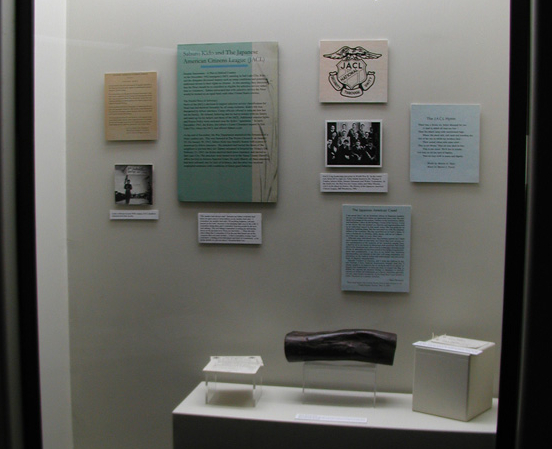Museum of Riverside

Reading the Walls Online Exhibit - Room #2 : Case 7
Saburo Kido and the Japanese American Citizens League

At the November 1942 emergency Japanese American Citizens League (JACL) meeting in Salt Lake City, Saburo Kido and the delegates discussed matters such as camp conditions, potential additional threats to their rights as citizens, and reclassification of Nisei for selective service in the armed forces. At this meeting, they discussed that the Nisei should be re-classified as eligible for selective service rather than as volunteers. Saburo as did others advocated that with selective service the Nisei would be treated as equals with other American citizens. News of the JACL’s decision to support selective service classification for Nisei was not received favorably by all camp residents. Kido’s life was threatened by fellow internees. Camp officials offered to relocate him but not his family. He refused, believing that he had to remain with his family and stand up for his beliefs and those of the JACL. Additional exterior lights and Poston Police were stationed near the Kido’s "apartment." In early December 1942, the Kidos, did submit an official request to relocate to Salt Lake City, where the JACL had offered Saburo a job.
At the end of December, the War Department announced the formation of a Nisei combat unit. This was featured in The Poston Chronicle produced by the "internees" on January 29. On January 30, 1943, Saburo Kido was brutally beaten with an ironwood club by fellow internees. His attackers had barred the doors of the neighbors to prevent their aid. Saburo remained in the hospital for 14 days. On February 23, 1943, the Kidos received their leave clearance and moved to Salt Lake City. The attackers were turned over to the Yuma County Sheriff’s office for trial in Arizona Superior Court. By early March, all three attackers had been released, one for lack of evidence, and the other two received suspended sentences with conditions of future good behavior.


